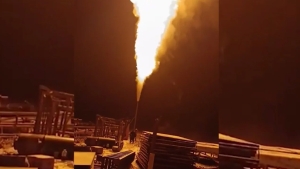
According to the data from the Republic Aerogeodesy Center, over the past three years, 96 percent of land plots in Uzbekistan have been incorporated into electronic digital maps. This was reported by Zamin.uz.
This was announced by the head of the center's department, I. Toshtanov. To effectively organize topographic survey work, a special aircraft, an aerial camera, and 112 drones were purchased.
Additionally, six information systems and data centers have started operating in the sector. As a result, cadastral documents were formalized for 1.2 million hectares of agricultural land reserves, and a total of 425 thousand hectares of land were allocated to 675 thousand residents and farmers.
Monitoring and registration work is regularly carried out by region according to the categories of the country's land fund. In recent years, the effective management of land resources and their rational use have reached a new level.
For this reason, step-by-step registration work is being carried out on all land plots. Lands classified as agricultural but actually used for industrial or other purposes have been fully registered, and proposals have been submitted to the Government commission.
Specialists from the Republic Aerogeodesy Center conducted the registration of these plots and created their electronic maps. These works were carried out based on aerial photographs taken from a Tecnam P2006T aircraft.
Orthophotos were created, and each object in the mapped areas was thematically deciphered with high accuracy. So far, the current status of land accounting areas has been studied in the Republic of Karakalpakstan, Samarkand, Surkhandarya, and Khorezm regions.
In Khorezm region, data on all eight categories of the land fund were analyzed, and actual usage was clarified. According to the report, the land area in Khorezm region increased from 608,158 hectares to 618,432 hectares.
The changes in land categories mainly affected agricultural lands. Lands classified as agricultural were actually reclassified into other categories, including settlements, industrial lands, lands of historical and cultural significance, water bodies, and nature conservation areas.
Overall, in Khorezm, based on Article 9 of the Land Code, 60,284 hectares of land designated for agriculture were reclassified into other categories, and a proposal was prepared for the Government commission. Registration work on agricultural lands is ongoing in other regions as well.
For example, in Andijan region, the land area shown in the report as 360,585 hectares was reduced to 294,756 hectares after study. In Samarkand, it decreased from 1,466,018 hectares to 1,270,376 hectares, and in Surkhandarya, from 1,356,595 hectares to 1,221,314 hectares.
The irrigated crop area within agricultural lands was reported as 296,983 hectares, but in reality, it was found to be 273,475 hectares. Additionally, 817 thousand hectares of settlements and industrial lands were classified as agricultural, which caused problems in fully allocating and privatizing these land plots to their owners.
So far, proposals to change the categories of more than 542 thousand hectares of land plots in Karakalpakstan, Samarkand, Surkhandarya, and Khorezm regions have been prepared and submitted to the Government commission (source: Zamin.uz).







